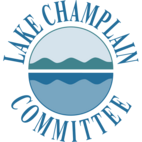
Take the Lake Protection Pledge!
Lake Champlain’s water quality reflects what we value as individuals and as a society. Everyone who lives in or visits the Lake Champlain watershed can play a role in protecting and improving lake health. LCC has put together the Lake Protection Pledge (pdf) -- a list of actions individuals can take to protect water quality. Fill out the online pledge form below to help steward the lake. Please include an outside photo of you (around water if possible) as we’re updating our promotional material and would like to have pictures of pledge participants.
Yes. I/we agree to take the Lake Protection Pledge!
I/We Pledge To:
AROUND THE HOME
- Dispose of pharmaceuticals at Drug Take Back days or at safe disposal boxes at law enforcement agencies and pharmacies; never flush medicines down a toilet or drain.
- Position gutters to drain onto vegetation or into a rain barrel.
- This lets the water filter into the ground rather than flowing directly to waterways.
- Clean up pet waste at home and when walking the dog. Dog and cat wastes contain high levels of bacteria harmful to people and the lake. Deposit pet poop in garbage cans.
- Use permeable pavement when upgrading driveways and walkways. They allow rainwater and snowmelt and the pollution they carry to drain into the ground rather than run off untreated into waterways.
- Never dump toxic materials down stormdrains, garage drains, or on the ground. Waste dumped in stormdrains or on the ground is not treated before it enters waterways.
- Keep stormdrains and ditches clear of debris. Debris prevents proper drainage and can cause flooding.
- Conserve water to reduce loads to wastewater treatment plants, save energy and costs. Fix leaks, add faucet aerators, and replace showerheads and toilets with low-flow models when upgrading. Choose EPA WaterSense-labeled fixtures for greater efficiency and performance.
- Use non-phosphate dishwasher detergents, it’s the law. Check labels - excess phosphorus leads to cyanobacteria and blooms that can turn toxic. .
- Have your septic tank inspected and pumped regularly. Without regular checks and pumping, septic systems can fail, causing severe water quality problems and costly repairs.
AROUND THE YARD
- Don’t use phosphorus-based fertilizer on your lawn or garden unless a soil test indicates you need it. It’s the law in NY & VT. Most lawns don’t need fertilizer, and whatever excess is applied ends up in the water, feeding algae and cyanobacteria growth.
- Use compost and mulch to improve soil health. These products release their nutrients slowly, providing long- term feed for your lawn and garden.
- Landscape with native groundcover and shrubs instead of lawn. Plants naturally adapted to local conditions require less maintenance and fertilizer.
- Choose drought-tolerant and pest-resistant plants. This minimizes the need for pesticides and excess watering.
- Avoid using pesticides and herbicides. They kill beneficial organisms as well as bothersome ones. When it rains, they wash into stormdrains and streams. Non-toxic insecticidal soaps, dormant oil sprays and "helpful insects" such as ladybugs can keep pests at bay just as well.
- Raise the blade of your lawn mower and cut your lawn to three inches and trim only a third of the length of the grass blade when you mow to encourage a stronger root system that captures rainfall and lessens the need to water during a dry spell.
- Leave grass clippings to decompose on the lawn. Grass clippings and other organic matter provide natural slow-release fertilizer and improve the lawn‘s ability to hold water.
- Maintain a vegetated buffer along the stream, river or lake if you live along a shoreline. Buffer strips shade the stream, filter runoff, stabilize streambanks, prevent erosion and provide habitat for animals.
- Water in the early morning to prevent losing water to evaporation during mid-day. Water slowly and deeply to avoid surface runoff, inspect hoses for leaks and direct overhead sprinklers toward vegetation and away from the street or driveway.
- Avoid over-watering. Excess water runs off into the stormdrain system.
- Install rain barrels to collect water from rooftops to water your lawn and garden. An inch of rain falling on a 1,000 square foot roof will contribute about 600 gallons of water.
- Re-seed thin areas and bare patches of landscape to prevent erosion and keep soil from running off into waterways.
AROUND THE GARAGE AND TOWN
- Avoid single-use items like plastic bottles, coffee cups and lids, cutlery, bags, plastic wrap, products with microbeads and microplastics and “free” gifts you don’t need.
- Wash the car at a commercial car wash where the water is collected and recycled. If you wash at home clean vehicles on lawn or vegetated areas instead of pavement. This minimizes dirt and detergents entering streams through the stormdrain system. If washing at home, use environmentally-friendly soap products and shut the hose off between rinses.
- Maintain the car with regular tune-ups and check for leaks. Leaking fluids end up on parking lots and are washed into stormdrains and waterways during the next rain.
- Dispose of oil and antifreeze properly. Keep it out of stormdrains.
- Reduce automobile trips. Take a bus, ride a bike, walk or carpool when possible and practical. The average car emits about 900 pounds of pollution into the air each year and some of this ends up in the lake.
